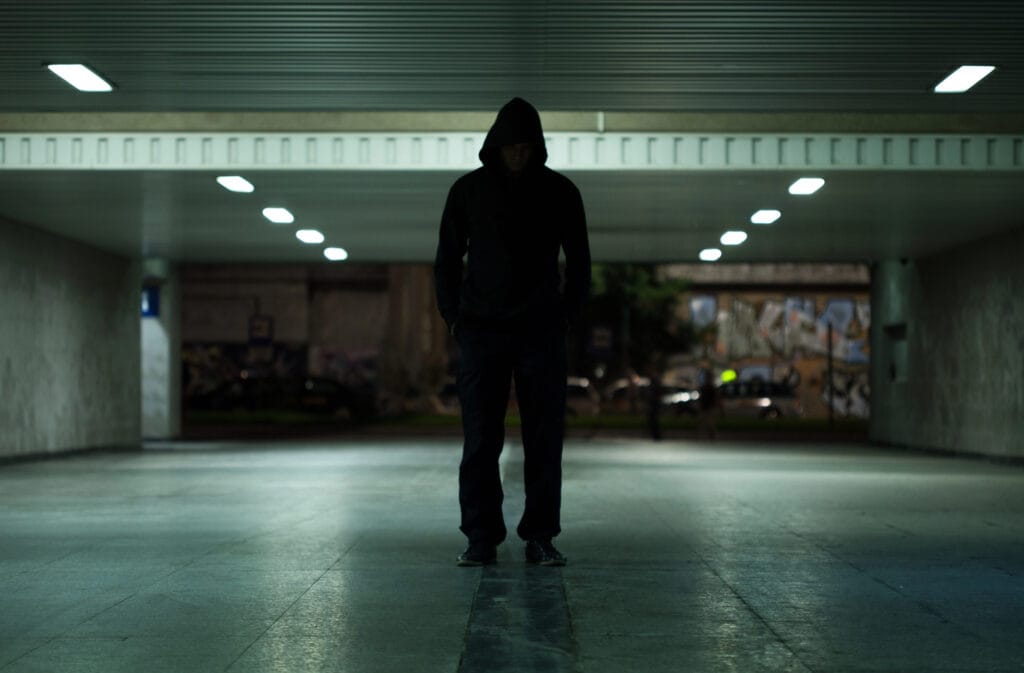Unveiling the Landscape of Crime in California
California, renowned for its economic might and cultural diversity, also grapples with stark regional disparities in crime. While overall crime rates are lower than their 1990s peak, certain cities face persistent safety challenges. In 2023, California’s violent crime rate stood at approximately 503 incidents per 100,000 people, up slightly from the previous year, according to the California Department of Justice. These figures provide a crucial lens into where intervention is most needed—and why.
Investigating the Source of Crime Data
Crime statistics in California are primarily collected from local law enforcement through the FBI’s Uniform Crime Reporting (UCR) program and the California DOJ’s OpenJustice portal. These sources provide standardized data on violent and property crimes, allowing analysts to compare crime rates (not just totals) across cities of varying sizes.
How Crime Rates Shape Our Understanding of City Safety
Crime rates—incidents per 100,000 residents—offer a normalized way to assess public safety. They help determine where risk is statistically higher and guide decisions on resource allocation, community intervention, and law enforcement strategy. For example, San Bernardino consistently reports violent crime rates well above the state average, triggering both local and statewide response measures.
Violent Crime vs. Property Crime: A Distinctive Analysis
Crime falls broadly into two categories:
- Violent crimes: Murder, rape, robbery, aggravated assault
- Property crimes: Burglary, larceny-theft, motor vehicle theft, arson
In California, property crimes occur at a much higher rate than violent crimes. Cities like San Francisco may show moderate violent crime but extremely high property crime, particularly theft from vehicles.

The Dark Side of the Golden State: A Look at the Most Dangerous Cities
1. San Bernardino: A Struggle Against Violent Crime
San Bernardino routinely ranks as one of California’s most violent cities. According to State DOJ data, its violent crime rate surpasses 1,000 incidents per 100,000—double the state average. Nearly 30.6% of residents live below the poverty line, compounding the issue.
Efforts are underway. In late 2024, Governor Gavin Newsom deployed California Highway Patrol (CHP) units to support San Bernardino police. The city also saw an 11% drop in violent crime and a 50% drop in homicides year-over-year.
2. Oakland: Urban Crime and Its Complex Roots
In 2023, Oakland experienced a 21% rise in violent crime and a 17% increase in property crime. Robberies were up 38%. The city struggles with over 59 active gangs, according to a 2024 city report.
The revitalization of its Ceasefire violence intervention program is key to reversing trends. The initiative connects high-risk individuals to services and sets clear consequences for continued violence.
3. Stockton: The Battle Against Gang Violence
Stockton reports one of the state’s highest homicide rates, around 1.5 per 1,000 residents, according to ABC10. Gang violence is a central issue. Stockton’s Office of Violence Prevention coordinates with credible messengers to intervene with at-risk youth. Ceasefire-like approaches have reduced shootings and homicides.
Stockton also battles high property crime, particularly car thefts. Citywide steering lock giveaway programs aim to curb auto theft.
4. Compton: Legacy Challenges of Crime
Compton’s violent crime rate hovers around 1,142 per 100,000 residents, with gang activity linked to as much as 65% of homicides, per the Los Angeles Times. The city transitioned to being policed by LA County Sheriff’s Department in 2000 to address corruption and improve oversight.
The DOJ’s federal partnership from 2015–2018 helped seize hundreds of illegal firearms and make over 4,000 arrests. Local nonprofits continue outreach through newer initiatives like STOPP.
5. San Francisco: The Contradictory Nature of a Tourist Haven
San Francisco sees moderate violent crime but leads the state in property crime. Its rate is over 72.3 property crimes per 1,000 residents, according to city dashboards.
While 2023 saw a 9% drop in property crime, public concern remains high. Smash-and-grab thefts, particularly near tourist areas, dominate local headlines. Voters approved stronger enforcement powers and expanded treatment mandates for drug offenders in early 2024.

Understanding California’s Crime Trends and Prevention Measures
The Crucial Role of Law Enforcement and Community Initiatives
California’s response to crime is increasingly hybrid: enforcement plus prevention. Cities like Los Angeles and Oakland are pairing predictive policing tools with community-based programs. The state’s CalVIP grants fund violence reduction models like hospital-based interventions and street outreach.
Socioeconomic Factors and Their Influence on Crime Rates
All of California’s most dangerous cities have poverty rates over 14.5%, per the Public Policy Institute of California. Unemployment, poor educational outcomes, and housing instability contribute to higher crime.
The Evolution of Crime in California’s Urban Centers
California’s violent crime peaked in 1992 at over 1,100 incidents per 100,000. Today, that rate is halved, thanks to better policing, economic growth, and targeted reforms, according to California DOJ archives.
The Other Side of the Coin: Identifying the Safest Cities in California
The Attributes of Safety and Peace
Cities like Danville, Irvine, and Rancho Santa Margarita report violent crime rates under 100 per 100,000 residents, per SafeWise. These cities have high median incomes, robust local governance, and proactive policing.
How Crime Statistics Influence City Rankings
City rankings use FBI crime data normalized per 100,000 people. Cities not reporting annually may be excluded, skewing perception. Transparency is increasing through tools like OpenJustice and NeighborhoodScout.
Methodology Behind the Madness: Determining Crime Rates in California
From Crime Data to Public Awareness
Standardized categories (violent/property) are compiled annually via local police reports. Rates are calculated per capita. Real-time dashboards, such as San Francisco’s, offer neighborhood-level visibility.
Deciphering the Complex World of Crime Statistics
While raw data is helpful, multi-year trends provide better insight. Cities like Oakland have reclassified incidents to improve reporting accuracy, which can impact year-over-year comparisons.
The Dichotomy of Crime in Urban vs. Suburban Areas
Urban areas concentrate risk: poverty, density, and social dislocation. Suburbs with low poverty and stable populations experience less crime. A PPIC report emphasizes these structural divides.
Addressing the Challenges: From Poverty to Police Presence
Strategic solutions include:
- Housing-first policies
- Youth employment programs
- Gun buyback initiatives
- Co-responder mental health team
A Comparative Perspective: Dangerous Cities vs. Safest Havens
Contrasting cities like Oakland vs. Danville or Compton vs. Irvine illustrates how income, education, and infrastructure drastically affect public safety. Data dashboards and rankings from UCR and SafeWise make this contrast visible.

Frequently Asked Questions (FAQ) About Crime in California
What Makes a City “Dangerous”?
High violent and/or property crime rates per capita—especially persistent trends—typically classify cities as dangerous. Poverty, gang presence, and enforcement gaps are leading contributors.
Can Crime Rates Predict Future Safety?
They offer trends but not certainties. Multi-year patterns, when paired with socioeconomic and demographic data, inform predictive policing and resource planning.
Navigating the Future: Trends and Predictions in City Safety
Predictive Analysis and Crime Prevention Strategies
AI and data analytics help forecast high-risk zones. Programs like Ceasefire and Group Violence Intervention are expanding, with real-time gunshot detection and social network analysis gaining traction.
The Role of Technology in Shaping Public Safety
From gunshot detection (e.g., ShotSpotter) to public dashboards and license plate readers, tech is central to California’s safety roadmap. San Francisco and LA are investing heavily in real-time crime centers.
The Path Forward: Reducing Crime, Enhancing Safety
Community Efforts and Law Enforcement: A Synergistic Approach
Collaboration matters. Programs like Oakland’s Community Ambassador Program and LAPD’s Community Safety Partnership show how trust-building complements enforcement.
The Importance of Data in Crafting Crime Reduction Policies
From the BSCC to academic studies, data informs everything from budget allocations to policy reforms. Transparency and accuracy remain crucial.
A Glimpse Into Tomorrow: The Ongoing Battle Against Crime in California
Emerging areas of focus:
- Cybercrime task forces
- Fentanyl overdose response teams
- Coordinated retail theft crackdowns
The Role of Citizens in Building Safer Communities
Residents play a role: voting, reporting crime, and participating in neighborhood safety groups all contribute to safer environments.
Wrapping It Up: The Continuous Effort to Secure California’s Cities
The Journey Towards Lower Crime Rates
Though post-2020 upticks rattled many cities, California remains far safer than in past decades. Ongoing innovation and public engagement offer hope.
Hope Amidst the Challenges
With communities, technology, and policy aligning, California’s most challenged cities have a roadmap—and the resilience—to reverse course.


